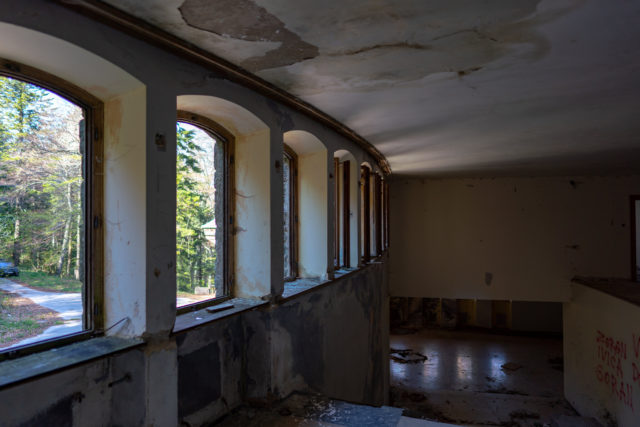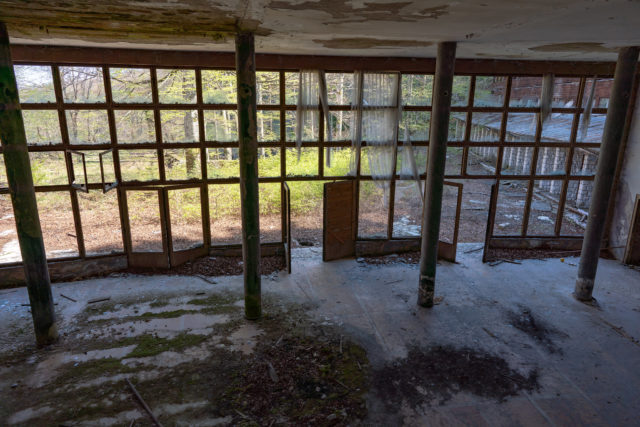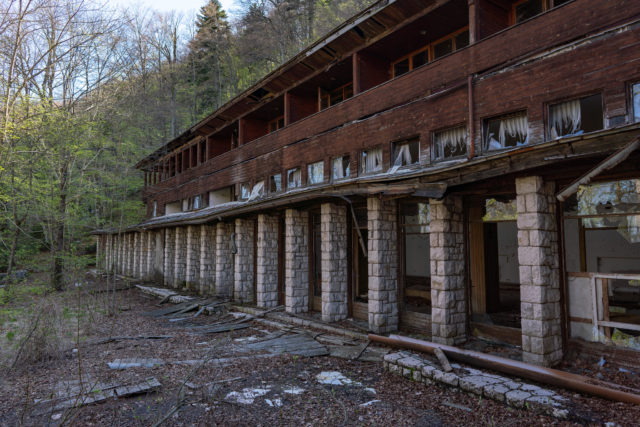In the forest hills, three kilometers from the Plitvice Lakes National Park, stands one of the summer residences of the former leader of the Socialist Federal Republic of Yugoslavia, Marshal Josip Broz “Tito.”
The national park is the most visited tourist attraction in Croatia and is included in the UNESCO World Heritage List, although few visitors know of the abandoned place situated nearby.
The former villa is officially called Villa Izvor but was also referred to as Object 99. It is suggested that the second name was used not only by the staff who worked in the residence but also by several local residents of the area.
There is one gruesome guess as to how the villa got this secondary name: it is rumored that there were 99 prisoner fatalities during the villa’s construction. However, like a lot of the information surrounding Villa Izvor, this fact cannot be proven.

After World War II, construction began on the mansion as a summer residence for Tito and other members of the country’s political and military elite. Due to a lack of records, it’s impossible to state the precise dates, but the general consensus is that the project ran from around 1948 until 1953.
Hundreds of prisoners were forced to work on the construction project, many of whom were political opponents of the Yugoslav regime. Such labor was sourced from the famous Goli Otok prison.

The total area of the completed villa was 6,000 square meters (6,4583 square feet). There were separate rooms for billiards, bowling, a cinema, and a restaurant for 150 people. Above the front door there is a wooden sign with the inscription “Villa Izvor.”
A marble staircase on either side of the entrance led to the second-floor mezzanine. The mansion was divided into two parts, one of which was exclusively for Tito with a magnificent view of the forest area. The other part of the building had 20 apartments for guests and officials.

Object 99 became Josip Tito’s secret hideout as well as the most expensive presidential residence in the entirety of Yugoslavia. This was because green slate from the Medvednica mountain in central Croatia and rare wood were used to construct the building.
A secret, additional feature was a half-mile-long tunnel beginning in the basement that was installed so that Tito and his guests could escape in the event of impending danger.

Despite the grandness of Villa Izvor, Tito himself rarely visited. Records suggest that he went there only about three to five times. However, the building was rarely empty as the Yugoslav military used the place for different parties.
Villa Izvor was used until the start of the Croatian War of Independence in March 1991. During the war, until November 1995, the building was occupied by Serbs from the Yugoslav People’s Army.

When the war ended, the property came under the protection of the Croatian National Guard and was then monitored by staff from the Plitvice Lakes National Park.
The park employees kept the former presidential residence in good condition until the early 2000s when they abandoned it for some unknown reason. After that, people began to loot Villa Izvor. Street artists also gained access to the building and used the large walls for their graffiti.

Today, the former mansion belongs to the state. In 2006 the President of Croatia, Stjepan “Stipe” Mesić, visited the villa, and the building was subsequently listed as a property of significant cultural heritage awaiting restoration.
A plan appeared to restore the residence, but it was never implemented. The idea of converting it into a hotel also never came to fruition.


In 2015, the Croatian Ministry of Public Administration announced a private investment initiative in one hundred public properties, including Villa Izvor. Despite interest from 22 companies, this idea was shelved after the Ministry for the Environment and conservation groups protested.
It was argued that the building’s restoration could pose a threat to the park’s ecosystem and its UNESCO status. Without its World Heritage status, the park might not attract the 1.2-1.8 million annual visitors it currently hosts.

Villa Izvor is listed on Google Maps, and urban explorers report that the road leading to it is in good condition. There is nothing left of value now, but the building itself remains impressive. However, with rotting floors and crumbling walls, this ruined residence is considered dangerous to explore.
A big thank you to Alan Mandić, who shared his images of this villa with us. Alan is an amateur photographer who runs a travel website and blog dedicated to Croatia called Secret Croatia.
You should definitely check out the Secret Dalmatia website where you will find information on Croatia, its traditions, its culture, and interesting tours you can book.



Another Article From Us: Seattle Underground: The remains of the old city that were abandoned and left in ruins until the 1950s

